I've been reading about the Roman Invasion of Scotland (Caledonia) lately in a book called 'The Eagle and the Bear - A new history of Roman Scotland', by John H Reid, and its given me the motivation to visit more of our Roman sites of late.
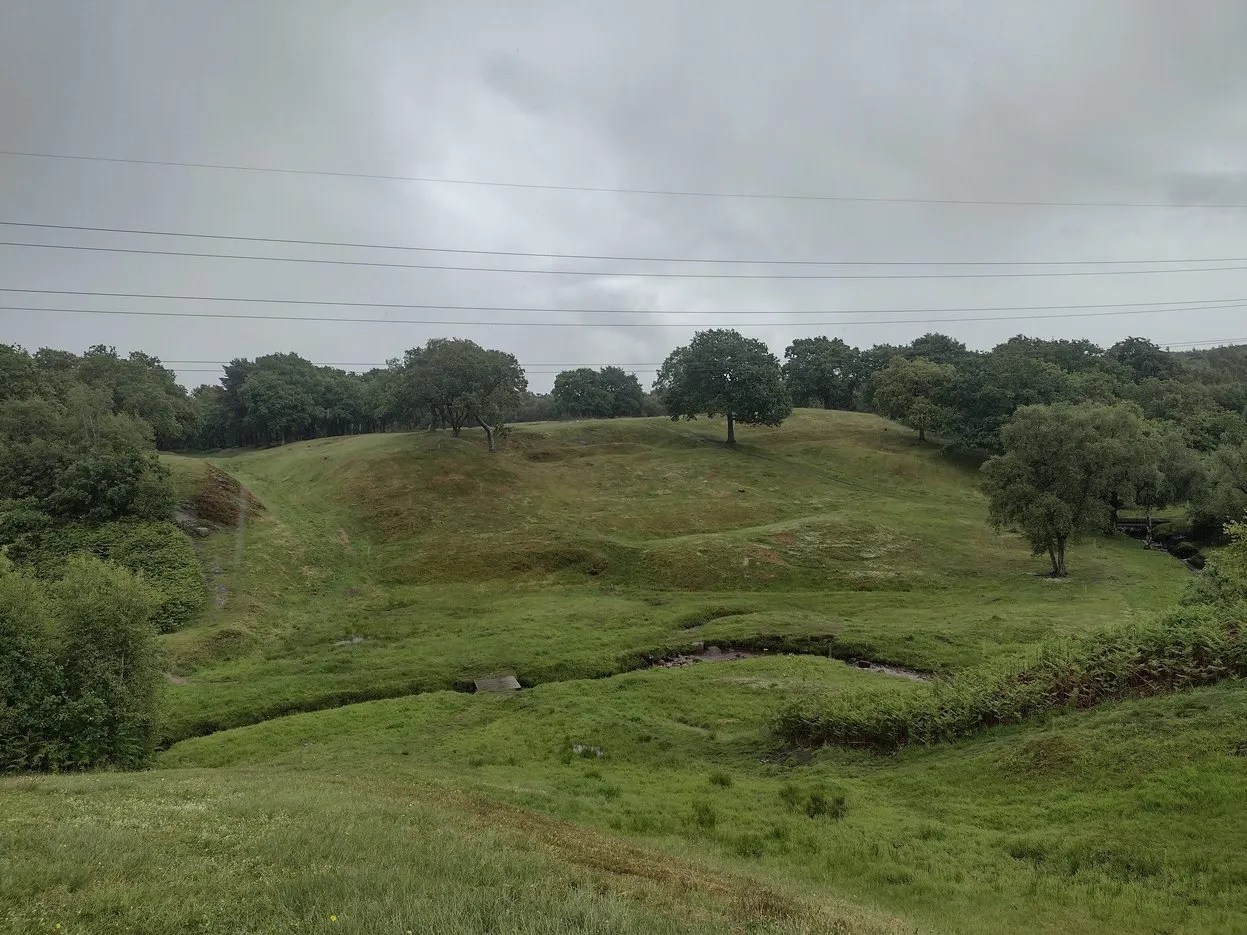
Today I visited a site called Rough Castle. Its near Falkirk, and was a location of one of the Forts that stood right on the wall.
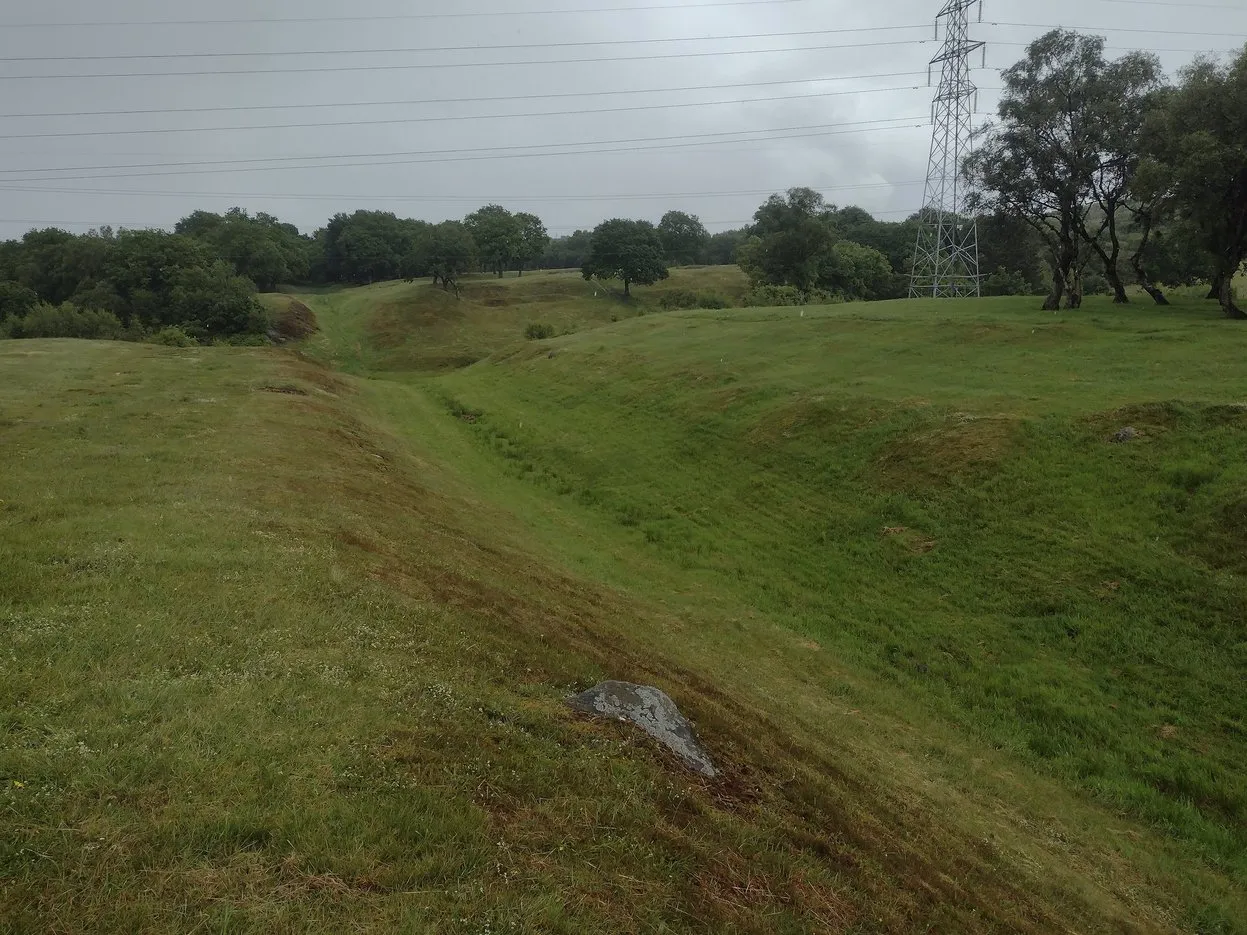
The Antonine Wall runs across Central Scotland from the Clyde to the Forth, and was built in the AD 140s, around 20 years after Hadrian's Wall was built across the top of England. The Antonine wall was more of defensive ditch with turf ramparts, compared to Hadrian's Wall, which is actually a stone wall. The pic above gives a good idea of what it generally looks like these days.
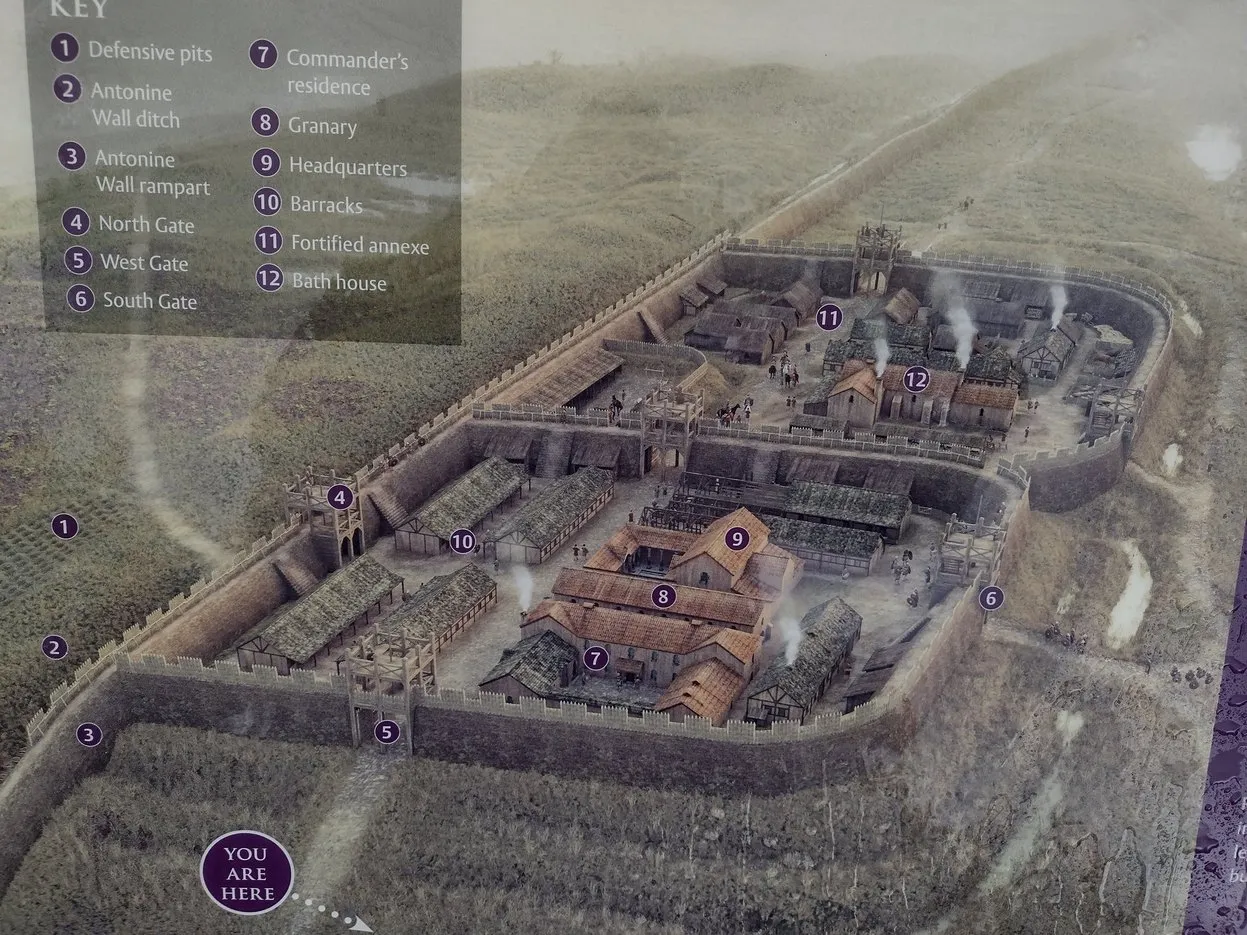
You cant actually see that much at the Rough Castle site these days (its 1900 years old after all) and need a good imagination. However the info boards help, and the pic above (which is from one of the boards) gives a good idea of the fort. The Wall runs along the left hand side. You can still see the defensive ditches that surround the fort, fairly clearly.
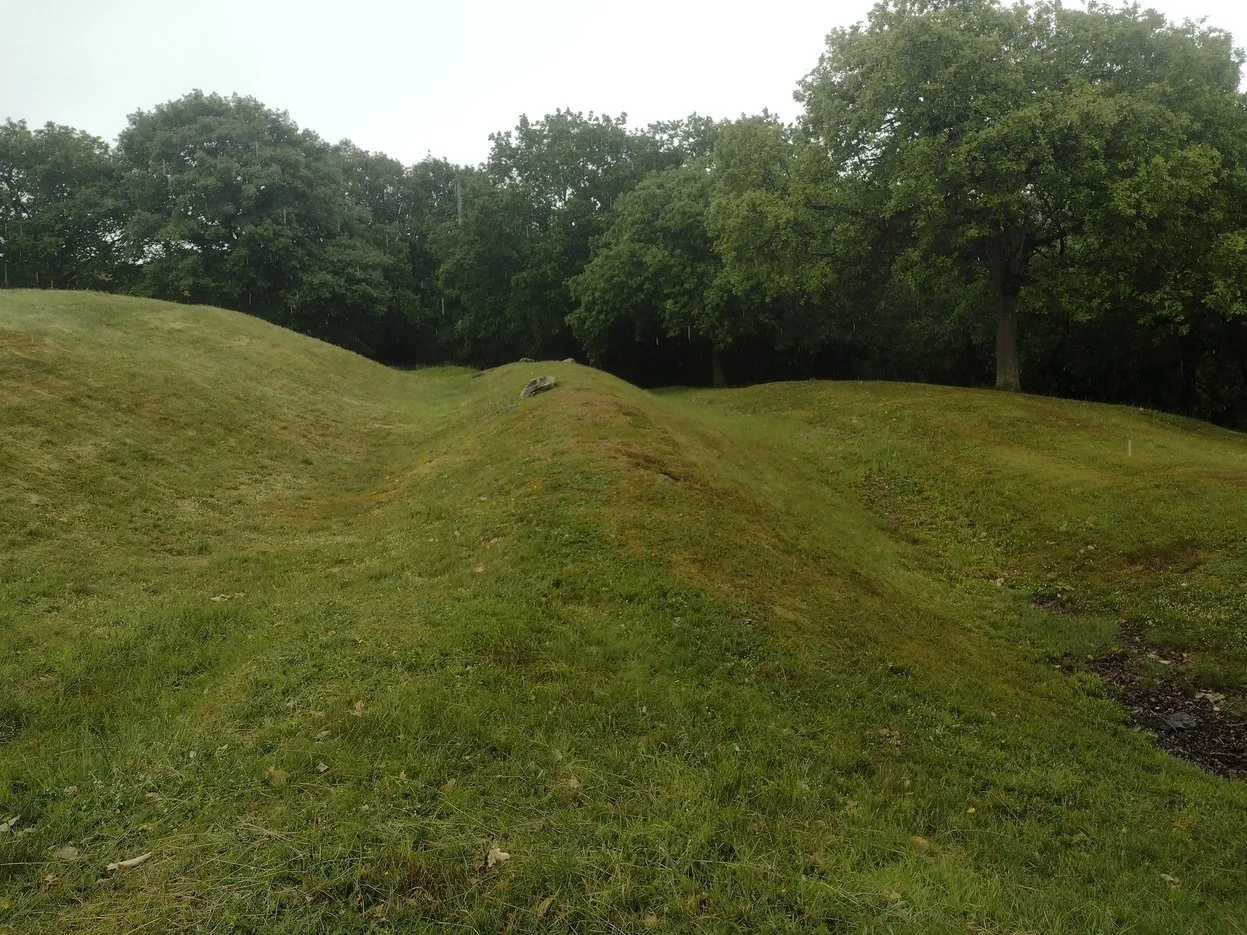
Thats the defensive ditches in the pic above. Attackers would have had to have run up through those, from right to left, with the soldiers on the fort wall having quite a height advantage.

The fort covers a decent sized area (maybe 4-6 football fields). As said, there is not so much to see for the majority of it, although there are a lot of info boards around explaining where everything is.

However, the really interesting thing is that there is still a fair amount of stuff left. Some of it was excavated and then covered back over to protect it from the weather and vandalism (yes, sadly some earlier items that was left uncovered was actually vandalised). So its simply that the remains are underground !

Rough Castle is quite famous for the feature above. These pits lie on the north side of the wall (so on the 'enemy' side). The wall had a set of nested defensive features, including pits like these. They would have been quite deep and contained stakes - so ending up in one of these would not have been pleasant. They are spaced such that it is impossible to run in a straight line at the wall, from there you would then have to run up and over the first rampart, down into the main ditch and then you have a steep climb up the second rampart, just to get to the bottom of the fort wall. It would have been near impossible (although wall breeches did occur).
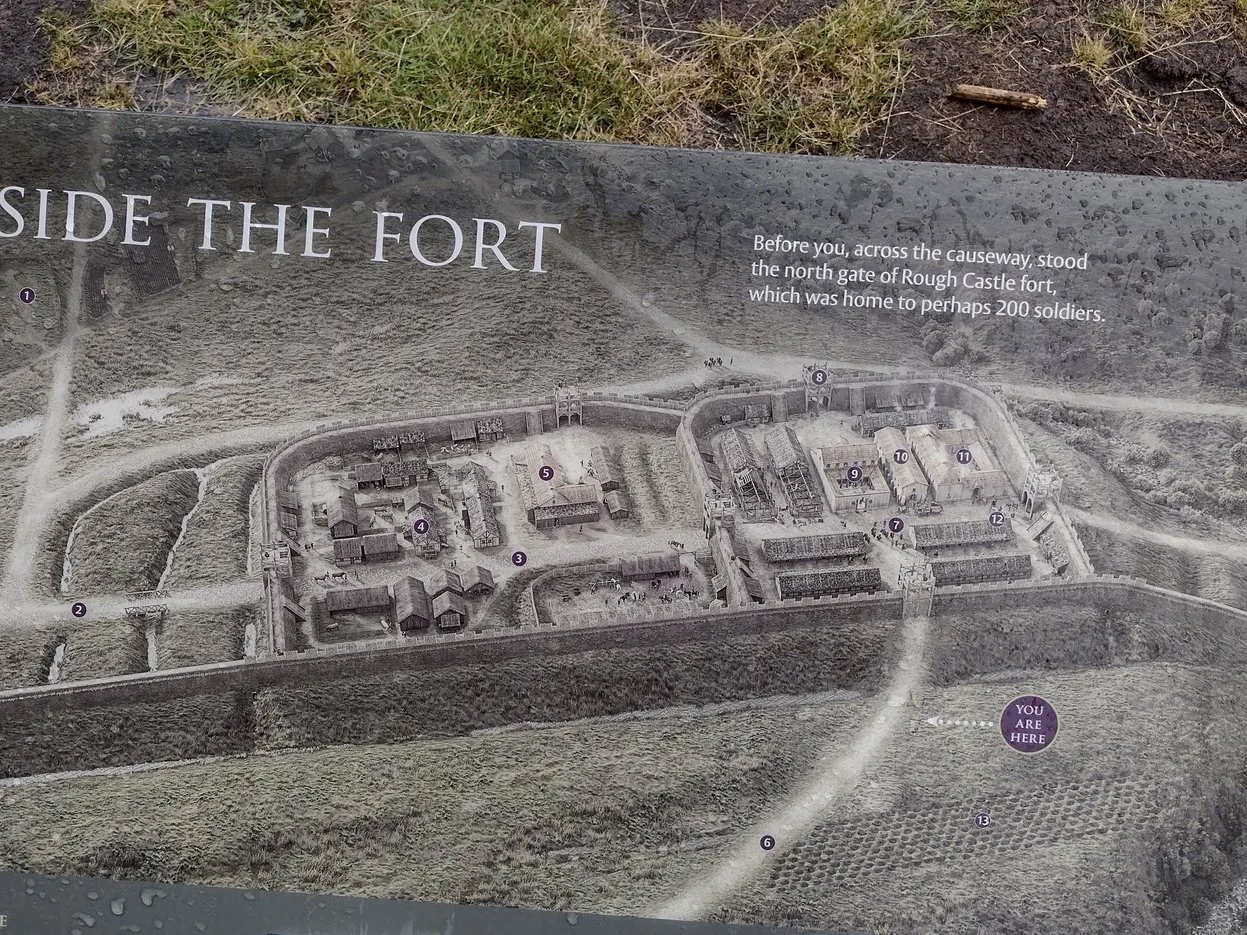
Thats another view of the fort above from one of the other info boards - you can see the pits in the bottom right hand corner.

The pic above shows the old road that led across the wall into the fort (via a fortified gate).

I have been to this site once before very briefly and didnt get to explore it all, so it was great to go back today and take my time to take it all in, even if it was raining solidly the whole time (yes, I got soaked !).

The excavations here have produced some very nice finds including latin inscribed stones, many of which are now held in the museum of Scotland. We are actually going there in sunday, because it is in Edinburgh where we live, so I'll aim to check out the section that houses those. It will be interesting to relate them back to the site.
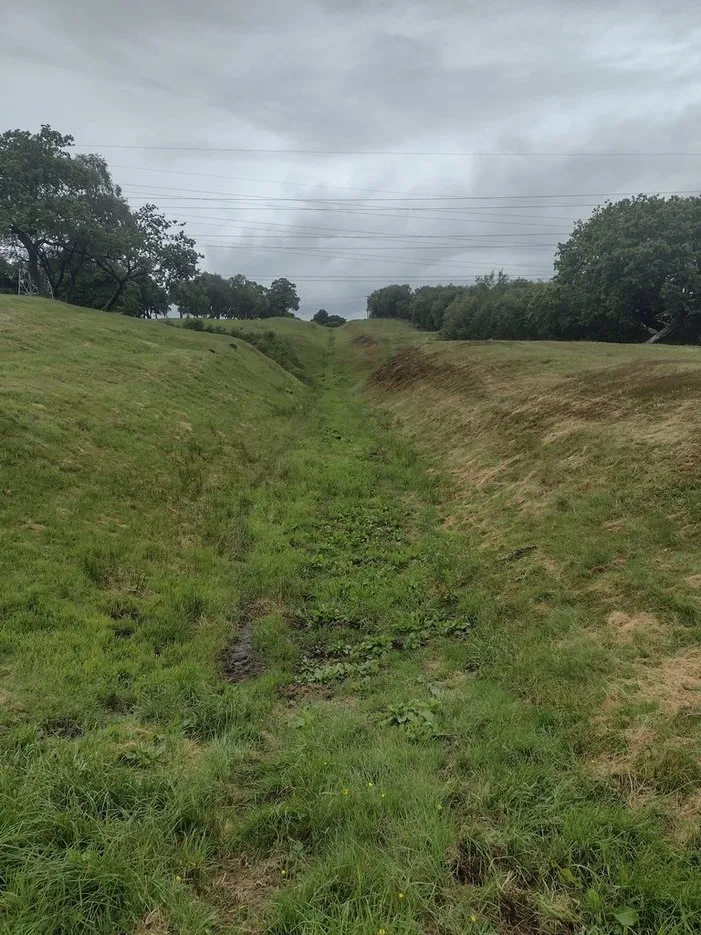
I know it does not look like much, but putting it all together with the information boards, the book I'm reading and the other sites I've been visiting of late is quite cool. I've been quite enjoying this, and so I think I'll keep on visiting the various sites we have around these parts. I've very much been enjoying it !
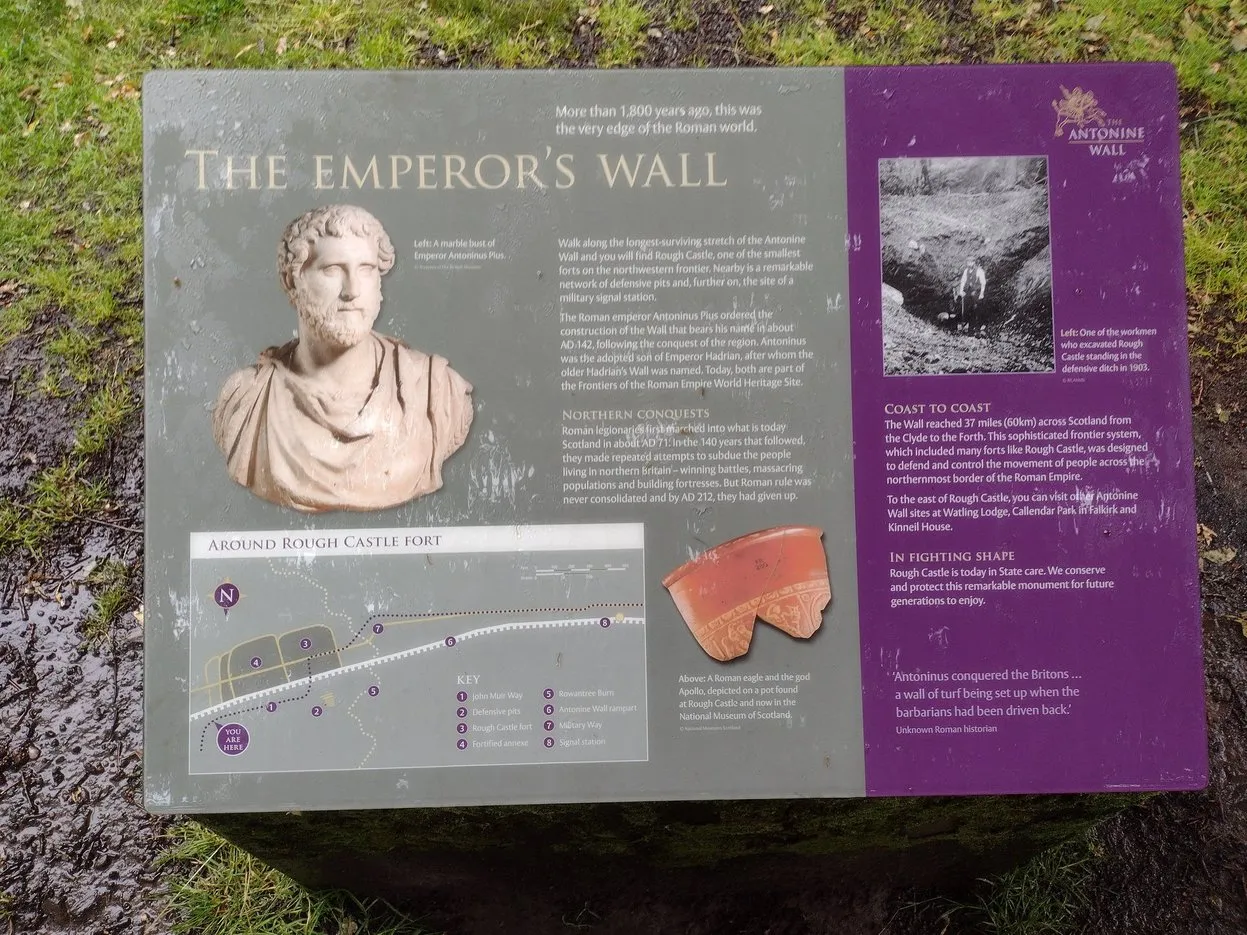
Well, I have to say that as wet as it was, I still really enjoyed it. I got a good couple of hours worth of exercise and I enjoyed taking in the site and reading about it on all the boards. Well worth the visit - and how about those pits !!!
